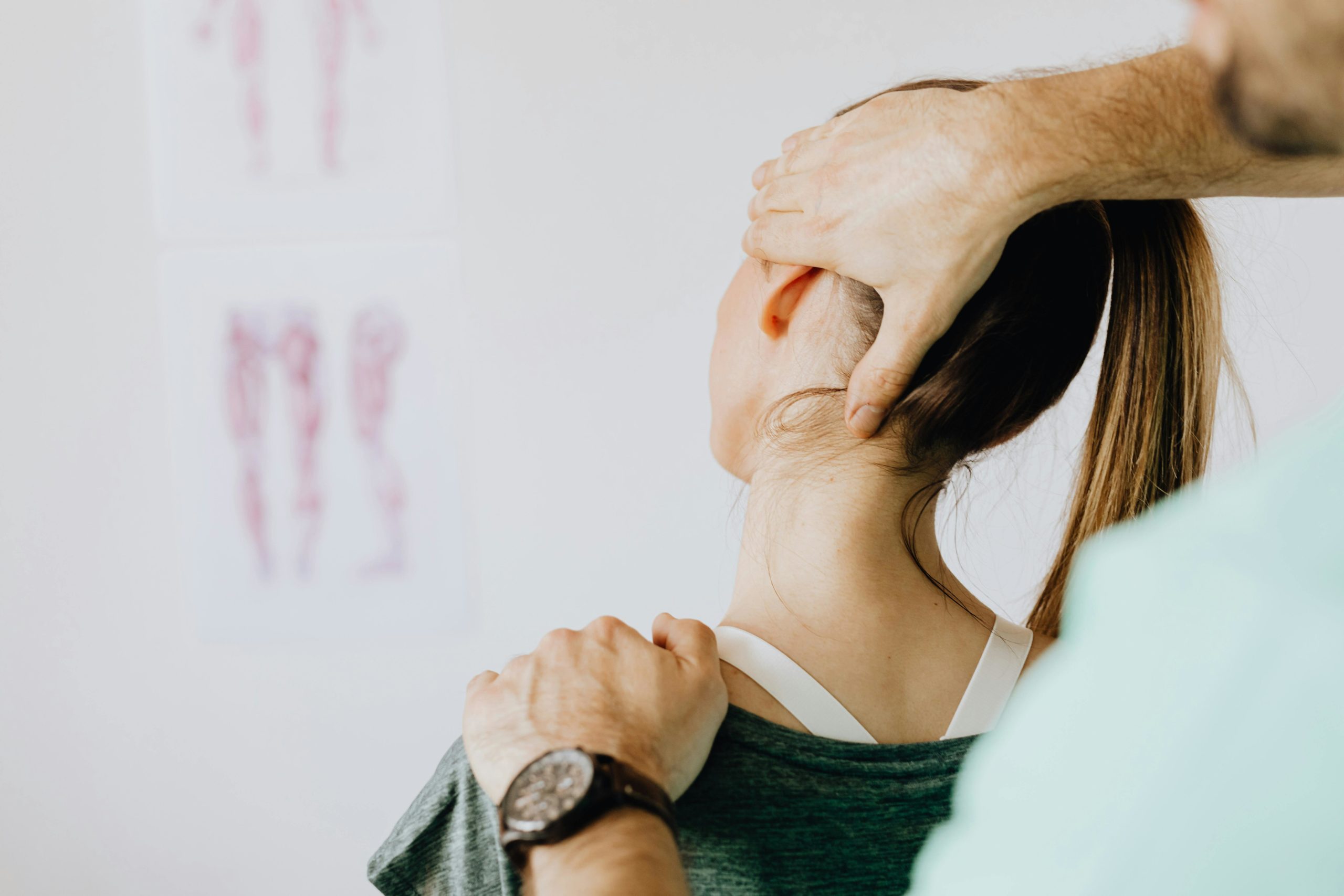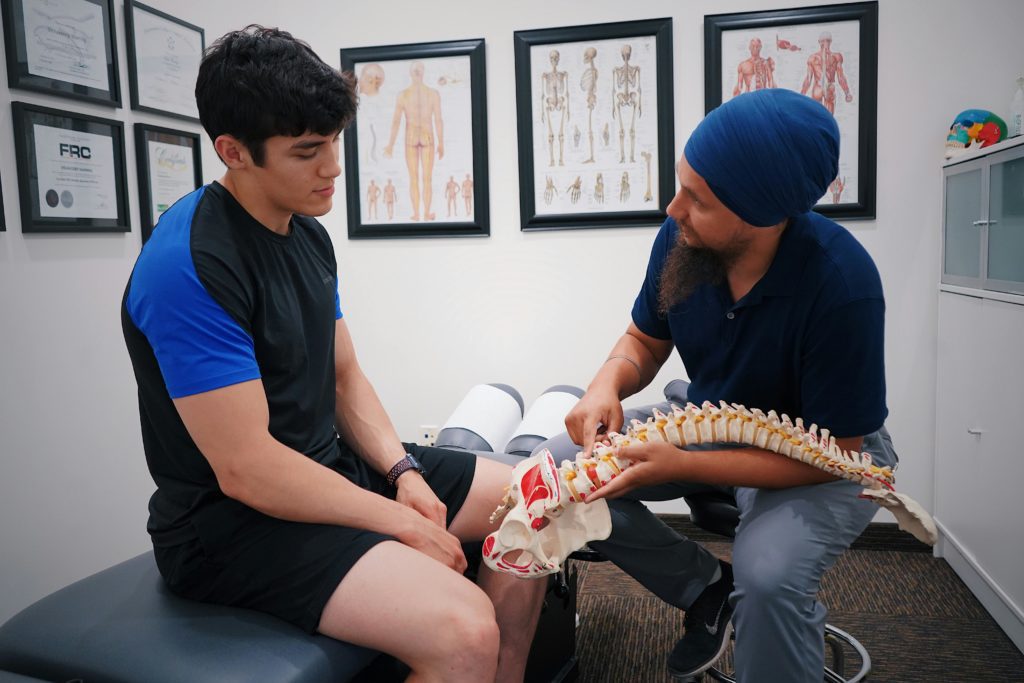Looking for self-chiropractic techniques to ease pain and improve your spine? This guide provides safe, simple methods you can do at home. Discover effective stretches and exercises to enhance your joint function and relieve discomfort.
Understanding Chiropractic Adjustments

Chiropractic adjustments are aimed at improving joint function while also providing relief by soothing muscles and alleviating nerve irritation. In the pursuit of enhancing mobility and joint performance, chiropractors apply a specific force to joints that have become immobile or misaligned, which is central to the practice of chiropractic care. These techniques can be particularly effective for bringing about pain relief from conditions like neck pain, lower back discomfort, and headaches.
During these chiropractic manipulations, controlled forces are applied by practitioners to achieve effective mobilization of the joints. Such interventions may offer immediate comfort for acute neck pains as well as enhanced functionality. With chronic back pain sufferers, this approach often stands on par with conventional treatments in terms of effectiveness. It has been associated with reductions in the severity of cervicogenic headaches.
It is important to recognize that licensed chiropractors possess specialized training allowing them to administer manual therapy adeptly within musculoskeletal health management due to their extensive medical knowledge base coupled with precision-based methodologies—making professional treatment an invaluable option for those seeking expertise in pain mitigation through chiropractics. Nevertheless, familiarizing oneself with the fundamental principles behind these methods could enable some individuals interested in self-care practices regarding the safe implementation of home-based self-chiropractic tactics.
The Mechanics Behind Joint Cracking
Cracking your back or other joints elicits a distinctive popping sound due to the synovial fluid present in your joints. This lubricating fluid contains gases that form bubbles, which collapse and produce an audible pop when we apply certain movements creating low pressure within the joint capsule.
This phenomenon isn’t exclusive to spinal joints as it can happen in various body parts where there is joint motion involved. When these gas bubbles are released through movement, many people feel relief and may notice an improvement in their joint function. Nevertheless, once a joint has been cracked, it typically requires time before this action produces another sound since the gases need ample time to reaccumulate.
Acknowledging how this works sheds light on why accuracy is crucial during self-chiropractic adjustments. By employing correct methods while adjusting oneself, one strives for improved joint function without inadvertently inflicting harm or exacerbating existing conditions of the joints.
Safe Self-Chiropractic Techniques

When it comes to self-chiropractic adjustments, safety is paramount. Instead of attempting forceful self-manipulations, incorporating approved chiropractic stretches can provide significant relief and improve spinal adjustment health. These stretches are designed to be safe and effective, offering a gentle approach to self-adjustment care.
We’ll explore three specific self-chiropractic techniques: the Cat-Cow Stretch, the Child’s Pose, and the Spinal Twist. These exercises are easy to perform and can be incorporated into your daily routine to enhance overall spinal health and reduce discomfort. Here are the details of each technique.
Cat-Cow Stretch
The Cat-Cow Stretch is an excellent method to enhance the flexibility of your spine and alleviate neck and back tension. It requires you to oscillate between two positions, known as the Cat Pose and Cow Pose, while synchronizing your breathing with each posture change. This exercise contributes significantly to spinal health by providing a safe alternative for long-lasting relief from discomfort that one might seek through cracking their back.
To execute the Cat-Cow Stretch accurately:
- Begin in a tabletop position on all fours.
- As you draw breath inward, let your spine sink towards the floor creating a dip (Cow Pose).
- With exhalation, arch your spine up into an arc-like motion (Cat Pose).
- Maintain this rhythmic pattern. Allow each inhalation and exhalation to guide these movements which are designed to free any entrapments of gas within the body while safely mitigating pain around the neck and backbone regions for genuine relief without harm.
Child’s Pose
The Child’s Pose provides a mild stretch that aids in easing discomfort and tension found within the hips and lower back. By encouraging the body to shift into an appropriately aligned position, regularly practicing this stretch can be beneficial for maintaining overall spinal health.
To engage in Child’s Pose, begin by kneeling on a mat with your feet flat while sitting back onto your heels. Then hinge at the waist, reaching forward as you extend your arms ahead on the floor. This stance works to increase joint space, which promotes improved joint motion and offers relief from tensions caused by poor posture.
This simple stretch is convenient to hold for periods and serves as a quick solution for temporary pain relief whenever needed.
Supine Spinal Twist
Another beneficial exercise for promoting flexibility and easing tension in the lower back is the Supine Spinal Twist. This stretch can greatly improve overall spinal health and contribute to keeping your spine in good condition.
Execute this stretch by lying flat on your back with arms stretched outwards. With knees bent, gently let them fall to one side while ensuring your shoulders remain pressed against the floor. Stay in this pose for several breaths before repeating on the opposite side.
Adopting this brief regimen twice a day can be highly advantageous for maintaining optimal spinal health.
Risks of Improper Self-Adjustments
Attempting self-chiropractic adjustments may appear to be a quick solution for pain relief, yet incorrect methods might pose serious health dangers. Self-adjustments that are too vigorous, especially those done on the neck or back, can result in muscle injuries, misalignments of the spine, and even grave harm. It is vital to recognize that without precision, self-chiropractic cannot replicate the outcomes achieved by professional chiropractic care.
Erroneous self-manipulation could aggravate pre-existing medical conditions rather than alleviate discomfort effectively as an experienced chiropractor would do. Ignoring proper guidance and attempting to address these issues alone may inadvertently intensify an existing ailment’s severity leading not only to more intense pain but also additional complications. Thus it is imperative when facing such situations that you seek out and adhere to expert advice from professionals within the field of chiropractic healthcare as necessary to avoid taking unnecessary risks with your well-being.
When to Seek Professional Help

Attempting to manage chronic pain through self-adjustments without seeking professional care can lead to a deterioration of one’s health. Signs that you should consult with a healthcare expert include persistent back, neck, or leg pain. Symptoms such as limited mobility and regular instances of headaches or migraines might also be an indication for chiropractic care.
Persistent injuries related to sports activities or occupational hazards, along with sensations of numbness or tingling in the limbs, could point toward neurological issues that necessitate expert intervention. Chiropractic treatment is equally beneficial for joint discomfort in areas like the wrists or knees. Acknowledging when it’s time to get professional chiropractic assistance is essential for halting Health decline and attaining enduring comfort.
Immediate engagement with skilled chiropractors often leads to more effective management strategies and improves long-term results. Should any indicators aligning with these symptoms arise, don’t delay pursuing specialized assistance – expertise borne out of proper training plays a pivotal role in confronting serious medical conditions and safeguarding overall health stability.
Tips for Maintaining Spinal Health

Ensuring the well-being of your spine involves not just sporadic adjustments, but also embracing everyday behaviors that bolster a strong and healthy backbone. It is crucial to pay attention to keeping proper alignment of one’s body, whether you’re sitting or on your feet—this can play a substantial role in reducing stress on the spinal column. To help prevent poor posture and avoid staying seated for too long, it’s important to incorporate regular movement into your day-to-day life.
To diminish pressure on your back and enhance your posture, consider utilizing ergonomic furniture along with supportive accessories. Adding gentle stretches and strength-building exercises tailored for self-care routines will contribute positively towards nurturing better spinal resilience. Exercises like Cat-Cow Stretching, the Child’s Pose stretch, and twists while lying down (Supine Spinal Twist) are highly effective for maintaining suppleness within the spine as well as soothing any rigidity.
Heeding subtle signals from within can lead to impactful tweaks in how we approach our daily activities, which may significantly benefit our overall spinal health. Should there be any discernible irregularities such as a noticeable bend in the backbone or ongoing unease felt around this area, seeking out an experienced chiropractor should be considered promptly for assessment and guidance.
How Can Physicians Group, LLC help?
If you are not entirely sure or feel comfortable performing self-chiropractic adjustments on yourself then seeking a licensed chiropractor is the way to go. Physicians Group, LLC has years of experience connecting patients with the right chiropractor for all of your adjustment needs.
Whether you are in the Florida or Minnesota region, Physicians Group LLC can help provide excellent chiropractic services. Be sure to contact us today for more information on chiropractors and our other physician services.
Frequently Asked Questions
What are the benefits of chiropractic adjustments?
Adjustments in chiropractic care are highly effective for pain alleviation, particularly by enhancing joint function and reducing nerve irritation. Such improvements can lead to substantial relief from various discomforts such as neck pain, back pain, and headaches.
If natural methods of relieving pain are what you seek, chiropractic adjustments could offer a potent solution!
Why do joints make a popping sound during adjustments?
During adjustments, the popping noise that joints produce is due to the collapsing of gas bubbles within the synovial fluid as a result of pressure shifts.
This event is typically harmless and doesn’t signify any problems!
Are self-chiropractic adjustments safe?
Performing self-chiropractic adjustments may pose dangers, as incorrect methods could lead to injuries or exacerbate current health issues.
To guarantee your well-being, it is advised to consult with a professional for proper chiropractic guidance.
When should I see a professional chiropractor?
If you are experiencing persistent pain, reduced mobility, regular headaches, or a lack of sensation in your extremities, it may be the right moment to consult with a chiropractor.
Procrastination can exacerbate your condition. Addressing the issue promptly can pave the way to alleviating discomfort!
How can I maintain my spinal health?
For the well-being of your spine, it’s essential to emphasize correct posture, ensure you take periodic breaks from prolonged sitting, and engage in mild stretching activities such as the Cat-Cow Stretch.
Implementing these modifications can significantly contribute to sustaining content and robust spinal health!



